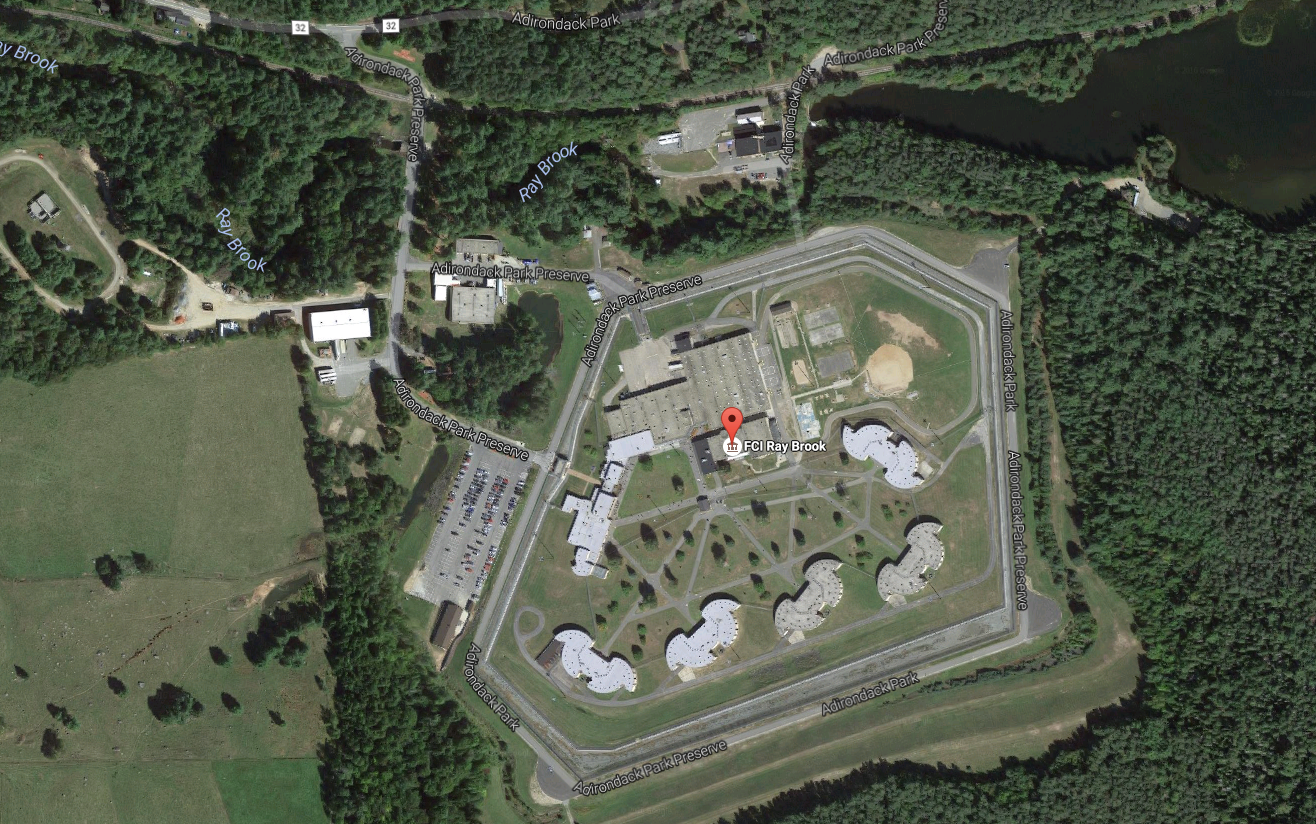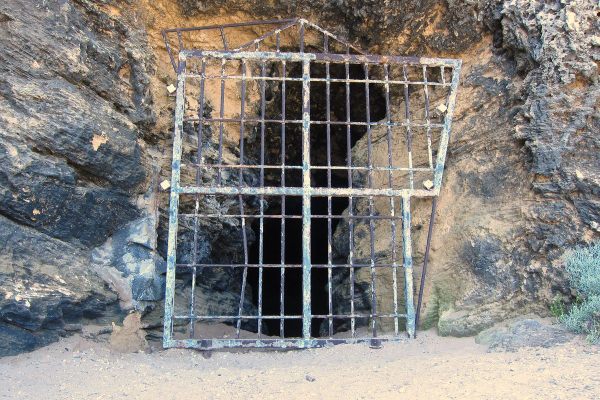The Forgotten Tale of How America Converted Its 1980 Olympic Village Into a Prison
Budget approval for a small New York town to host the games came with one very large caveat.
For two weeks in the winter of 1980, a small town in upstate New York had an Olympic Village filled with 1,800 of the world’s most elite athletes. Despite Cold War tensions, the mood in the village was jovial; the athletes shared meals, traded pins, and gathered in the Village’s “psychedelic room full of blinking electronic game machines” for endless rounds of pinball. Emotions ran high, as most Americans fondly remember the 1980 games for the “Miracle on Ice” victory over the Soviet hockey team, one of the iconic moments of any Winter Olympics.
But a short six months later, the U.S. Bureau of Prisons had converted the Olympic Village into Federal Correctional Institution Ray Brook, still standing today. The ice skaters, skiers, and hockey players were replaced by hundreds of incarcerated young men. The dorms turned into cells, the game room turned into a prison chapel.
This was not an accident. From the get-go, America was intent on building living quarters for the planet’s greatest athletes that could double as a medium-security prison for around 1,000 people. State and federal legislators vowed that they would not let the Lake Placid facilities turn into another crumbling piece of infrastructure, and instead argued that building a prison would be a practical investment to accommodate the nation’s skyrocketing number of inmates.
In the lead-up to the Rio games, architects and bureaucrats alike have discussed how when the Olympics leave town, host cities are often left with a “white elephant”—the unwanted buildings and stadiums the games leave behind. “We’re at a stage in the Olympics where social and financial responsibility are much more important than they used to be,” Bill Hanway, a planner of the London and Rio parks, told Wired. But this emphasis on sustainability isn’t completely new. Thirty-six years ago, the United States was keenly engaged in similar discussions about reuse and community impact for Lake Placid, the town that hosted the games. While the Rio planners designed puzzle-like modular structures which will be dismantled and turned into new buildings after this summer, the U.S. had a simple and controversial solution—build a prison they could use for decades to come, and call it an Olympic Village for two weeks.
The so-called “Olympic Prison” triggered what Sports Illustrated declared “a revolt, unprecedented in Olympic history,” as a growing number of visiting Olympic teams “(refused) to be incarcerated” at the Village, citing its tiny cells, barred windows, and barb-wire perimeter. But the revolt went far beyond the conditions of the facility itself. At a critical moment of expansion for mass incarceration, the Olympic Prison raised big questions both domestically and internationally—why did America need to imprison so many people, and why was it imprisoning them in the middle of the Adirondack Mountains?
A Quiet Olympics

Lake Placid during the 1980 Winter Olympics. (Photo: Dr. John Kelley, NOAA/NOS/COOPS/CC BY 2.0)
Lake Placid was not the first location one might think of to host an Olympic games. Nestled in upstate New York, hundreds of miles from an urban center, the town had just 3,000 residents. Yet what it lacked in population, it made up for in winter sports amenities. Its boosters noted that many American athletes already traveled to the town for training and, as the former site of the 1932 Olympics, it already had much of the necessary infrastructure—to the Olympic Planning Committee’s great relief, no one would have to build a new bobsled track.
The existing facilities meant the Olympics could be staged on a reasonable budget and with limited environmental impact. It was not just a matter of convenience, either, according to Lake Placid’s congressman, Representative Robert McEwen. “It is no secret to us in America that the measure of support given to athletes in Communist countries is on a level unknown to us here in America,” he told Congress.” This would be a step in the right direction, a worthy investment in American winter athletes in the midst of the Cold War.
Also, it would be safe. Terrorism weighed heavily on the minds of the Olympics organizers and the 1980 games would take place just a few years after the 1972 Munich attacks, in which members of a Palestinian terrorist group broke into the Olympic Village and killed 11 Israeli athletes. The security of the Village would be under extraordinary scrutiny, and hosting the games in a quiet, remote village rather than a major metropolitan city certainly seemed safer.
In the mid-1970s, the Lake Placid Olympics looked like a slam-dunk—cheap, secure, and a good symbolic move before Moscow hosted the Summer Games later that year. In fact, the Olympic Committee declared before Congress, one of the only things they would need federal funding for was the construction of the Olympic Village.
It Takes a Village

The Olympic Village under construction. (Photo: Courtesy Lake Placid Olympic Museum)
But nothing is ever easy with the Olympics; Lake Placid might seem like a thrifty choice, but it certainly wasn’t free. Host cities needed to house thousands of athletes in facilities that were clean, comfortable, and above all, secure. And in virtually every situation, this housing had to be built from the ground up for tenants who would stay for a grand total of two weeks.
As bottom lines rose, cities grew increasingly concerned about what would become of the Village once the Olympics left town. Following the 1972 Munich games, Village housing sat unoccupied for years, as the developer found it more convenient to take the rents guaranteed by the International Olympic Committee in the case of vacancy than to deal with tenants. The 1976 Montreal games swelled to 13 times the approved budget, leaving the city near financial ruin. The Village became embroiled in scandal when the developers were arrested on charges of fraud and conspiracy for allegedly copying the Village’s design from a French apartment complex, and illegally taking the land from a popular municipal park.
The Lake Placid Olympic Village saga began in early 1976, as McEwen approached one federal agency after another, hoping to find one that could repurpose the athletes’ housing complex. Congress appropriated $28 million in federal funds for construction of the Olympic Village near Lake Placid, but policy dictated that any federally financed Olympics facilities must also have a “secondary use.” To ensure Lake Placid’s Olympics bid, McEwen needed to find someone, anyone, to give a second life to the Olympics Village.

A satellite view of FCI Ray Brook, at the former Olympic Village site. (Photo: © Google 2016)
Ideas circulated about turning the Village to housing, to hospital space, and to a permanent athletics facility but each plan eventually lost steam. As the search became increasingly dire, McEwen heard that Federal Bureau of Prisons Director Norman Carlson had congressional authorization to build a prison somewhere in the Northeast. Carlson listened to McEwen’s description of International Olympic Committee security requirements for an Olympic Village, and told McEwen that the Olympic Village he described sounded exactly like one of the Bureau of Prison facilities.
Director Normal Carlson certainly had his work cut out for him in the 1970s. As arrests and incarceration rates reached all-time highs, they triggered a boom in demand for prison space. From 1969 to 1979, the Bureau added 24 new prisons, with more than 9,500 bed spaces. But alongside this unprecedented expansion came new waves of prison reform activism. Activists noted the tremendous racial disparities in sentencing and incarceration rates. They also drew attention to the horrendous conditions inside many American prisons, bringing a flood of lawsuits that challenged everything from abusive guards to medical experimentation on inmates.
The Nixon administration had a simple solution: build more prisons. Rampant prison overcrowding exacerbated many of the issues stressed by prison reformers—inadequate health care, substandard living conditions, inmate violence. Officials blamed overcrowding, rather than unfair treatment of inmates, for the unprecedented number of prison riots throughout the 1970s. Building more prisons would mean more humane conditions for prisoners, the Bureau of Prisons argued. Meanwhile, conservative politicians continued to insist that prison expansion was critical to maintain law and order and keep the growing number of drug offenders off the streets. In spite of activists’ best efforts, new prison construction received significant bipartisan support.

View of Lake Placid from the Mt. Van Hoevenberg Olympic Bobsled Track. (Photo: Lake Placid Region/CC BY 2.0)
If prison construction in urban and suburban areas triggered not-in-my-backyard backlash, prison construction in rural areas, and upstate New York in particular, became seen as an economic development solution. According to officials of the local antipoverty program, half of Essex County households survived on an income under $8,000 a year. The Olympic Prison promised over 200 new “recession-free” jobs, at a starting salary of $15,000, a huge boon for an area with the state’s highest unemployment rates for much of the ‘70s. “It’s the most sensible idea anyone’s come up with yet,” Lake Placid Mayor Robert Peacock told the media. As manufacturing and agriculture moved out of rural America, the prison industry moved in.
Three years after the 1976 agreement, Lake Placid had a nearly-complete Olympic Village, boasting 937 “sleeping rooms,” or as they’d later be known, “cells.” Each room was about 8-by-13-feet with cinderblock walls. The cells had bunk beds to accommodate two to four athletes, along with a wardrobe, equipment lockers, and a writing table and chair for each occupant. The majority of the rooms featured a single, narrow window with a steel rod running down the middle of the glass to discourage escape—or, in the case of potential Olympic terrorists, entry. Some rooms had no windows at all. Athletes entered through doors constructed of heavy steel with small peep-windows that guards would later use to check in on inmates. Two 11-foot electrified fences encircled the campus.
“Though the Lake Placid Olympics Committee has taken great pains to add enough All-American creature comforts (i.e., a disco, a movie house, a stage for live theater and concerts) to mute the effects of all those barred windows and cell-like ambience of the rooms,” the Sun reported, “a feeling of incarceration remains.”
The Olympic Prison

The exterior of FCI Ray Brook. (Photo: US Dept of Justice/Public Domain)
As construction wrapped up in 1979, signs of trouble emerged. Protestors began standing alongside Olympic torch runs with signs declaring such messages as “Olympic Torch = Freedom, Olympic Prison = Slavery.” A poster with the Olympic rings behind bars appeared throughout town. The national media, from 60 Minutes to the New York Times, began to take note. The answer to Lake Placid’s Olympic dreams would prove more contentious than they had hoped.
A group called Stop the Olympic Prison (STOP) emerged as the face of the anti-prison movement. A coalition of religious and civil rights groups, STOP’s rhetoric combined social justice and anti-racism with a decidedly moralist bent. “Prisons exploit and isolate the poor. They symbolize grief, suffering and destruction,” the organization wrote in one of its initial publications, “This prison violates the spirit of the Olympic Games, one of international humanity, community, and celebration.”
STOP argued that the Olympics Prison would isolate inmates, coming primarily from New York City and Boston, far away from their families and access to legal resources. This rang contrary to the established best practices in penology. The 1967 report of President Lyndon B. Johnson’s Commission on Law Enforcement and the Administration of Justice stated that “New institutions should…be relatively small, and located as close as possible to the areas from which [they draw their] inmates, probably in or near a city rather in a remote location.” A lawyer from the ACLU stressed this point in a 1979 hearing on the Olympics Prison, declaring, “There is almost no public transportation to Essex County. How many black families will be able to travel all weekend from Harlem to Lake Placid, or from Boston, to spend an hour or two with their sons or brothers?”

The poster for “Stop the Olympic Prison,”designed by Andy Hall and Michael Kroll, produced for the New York Moratorium on Prison Construction and the National Moratorium on Prison Construction, 1979. (Photo: Lincoln Cushing)
In the wake of the 1971 Attica prison rebellion, opponents also raised concerns about the staffing of correctional facilities—namely, the near-universal whiteness of the guards and employees. There was not a single black guard at Attica, a facility with about 61 percent African-American inmates. “(Lake Placid) could turn out to be an Attica,” said Reverend Graham R. Hodges of the Emmanuel Congregational Church in Watertown, New York, “where you have hundreds of black and other minority prisoners guarded by upstate rural white guards, many of whom have no understanding of the people they’re guarding.”
The Bureau of Prisons conceded that while the location was “not an ideal site,” the agency had encountered little success in attempting to place new facilities in urban areas. By the time construction began in Lake Placid, space in federal prison facilities was so limited that the organization was moving prisoners from the Northeast to a federal facility in Sandstone, Minnesota. “Lake Placid may be inconvenient for families in New York or Boston,” a spokesperson acknowledged, “but it sure as hell beats Sandstone.”
A Global Controversy

The Ice Area at Lake Placid in 1980. (Photo: Dan Lundberg/CC BY-SA 2.0)
The plans to convert the Olympic Village to a prison brought the emergence of American mass incarceration to an international stage. The Lake Placid Winter Olympics were scheduled to occur just five months before the Moscow Summer Olympics. By the late 1970’s, rumors circulated that the U.S. might boycott the summer games to protest Russia’s contentious human rights record. As controversy swirled around the implications of the American Olympics Prison, the Russians announced their own plans to convert the Moscow Olympic Village into public housing for 14,000 needy Russian citizens.
“One would have thought the two nations would have just the opposite kinds of villages, but not so. It is we Americans who are hosting Olympic athletes in a prison, the first time in nearly 3,000 years of history of the games,” wrote Reverend Hodges, in a letter to the Washington Post. As the United States clamored for humanitarian high ground, this was less-than-flattering comparison.

Playing billiards inside the Olympic Village. (Photo: Courtesy Lake Placid Olympic Museum)
Not all opposition was ideological—much of the international backlash to the Lake Placid facilities centered on how spartan and institutional the housing for their most elite athletes would be. Gianfranco Cameli, a member of the Italian Olympic Committee, toured the Village, then fired off a report to Rome: “After four years of hard training we cannot expect competitors to live in such a lousy place. The rooms clearly show what they are meant for. Two persons cannot be in them. If two stay inside with the door closed for privacy, they’d feel as if they were in prison—suffocating.”
In April 1979, Sports Illustrated published an investigation into the outrage around the Village, interviewing representatives of at least a dozen different countries. Outrage about facilities led many international Olympic committees to seek alternative housing, further complicating both the security situation and the impact on the already-weary Lake Placid community. As teams threatened to find non-Village housing, it heightened community concern that landlords would evict tenants—an apartment that might rent for $250 a month in normal times might draw $4,000 for the Olympics, Sports Illustrated predicted.

The Olympic Village disco in use during the games. (Photo: Courtesy Lake Placid Olympic Museum)
Others feared the symbolic implications of the prison-like space. Harry Fregoe, chair of the IOC’s athlete housing committee, insisted that the site’s barbed wire fences not be added until after the games. “We’re a little bit afraid of the concentration camp atmosphere for some people from European countries,” he reported. The protest group STOP encouraged European countries to write letters of disapproval to the U.S. government. They also stressed the stark contrast between international models of criminal justice and the emerging American model—as Holland, Sweden, Japan, England, and others were reducing their use of prisons in favor of community sanctions, the U.S. Federal Bureau of Prisons had doubled its number of prisons in the previous ten years.
The Opening Ceremonies

The Lake Placid Winter Games opening ceremony. (Photo: Dr. John Kelley, NOAA/NOS/COOPS/Public Domain)
As controversy peaked in 1979, Ramsey Clark, the former Attorney General under President Lyndon B. Johnson, testified that the controversy about the Lake Placid project wasn’t just about Lake Placid, or the symbolism of the Olympics—this would be a litmus test for the future of incarceration in America. “We are going to be masters of our destiny or the victim,” he told Congress. “It’s precisely the psychology of the prison, that once it is built you believe you have to fill them up.”
But the protests of Clark and others were not enough to stop the Bureau of Prisons; the Ray Brook Federal Correctional Institution opened for its first round of inmates just months after the Olympics concluded. Officials noted that the only remaining trace of the games were three flagpoles in front of the facility. They had once flown the flags of the 37 competing nations.
The 1980 Olympics represented a watershed moment for New York State’s relationship with incarceration. In the years that followed, small upstate cities, much like Lake Placid, began organizing to attract prison investment and the jobs that accompanied the new facilities. ”The addition of a prison of this size is very significant in our north country,” said Roger Tubby, a state economic representative to the Adirondacks. ”It adds another element of economic stability to an area that is largely dependent on the weather and tourism.”
New York state became one of the most significant areas of prison development in the nation, adding 39 new state prisons between 1982 and 2000. Almost every one was in a rural county. “Prisons are viewed as the anchor for development in rural areas,” said Thomas Coughlin, the New York Corrections Commissioner from 1979 to 1994, “We give our list to the Legislature, and the next day I get back the list of where our prisons are going to be. They pick ’em.” The Olympic Prison showed that incarceration could be sold as a new economic backbone for rural communities; a legacy that would have reverberations far beyond two weeks in 1980.
Thirty-six years after the Lake Placid games, the Ray Brook Federal Correctional Institution houses around 1,000 inmates per day–as STOP predicted, the vast majority of the men come from Boston and New York City. The prison created the jobs that lawmakers promised—today employing about 250 guards and staffers. After 1980, the prison receded from the media spotlight. Occasionally it received a notable inmate—the rapper Ja Rule was incarcerated there from 2012 to 2013—but few remember its origins. A manager at the Adirondack Museum told North County Public Radio that when tourists ask where they can see the 1980 Olympic Village, she responds, “in order to visit that Olympic Athletes’ Village (today), you would have to commit a federal crime.” The interlocking Olympic rings, when seen from a certain angle, can easily become handcuffs.











Follow us on Twitter to get the latest on the world's hidden wonders.
Like us on Facebook to get the latest on the world's hidden wonders.
Follow us on Twitter Like us on Facebook